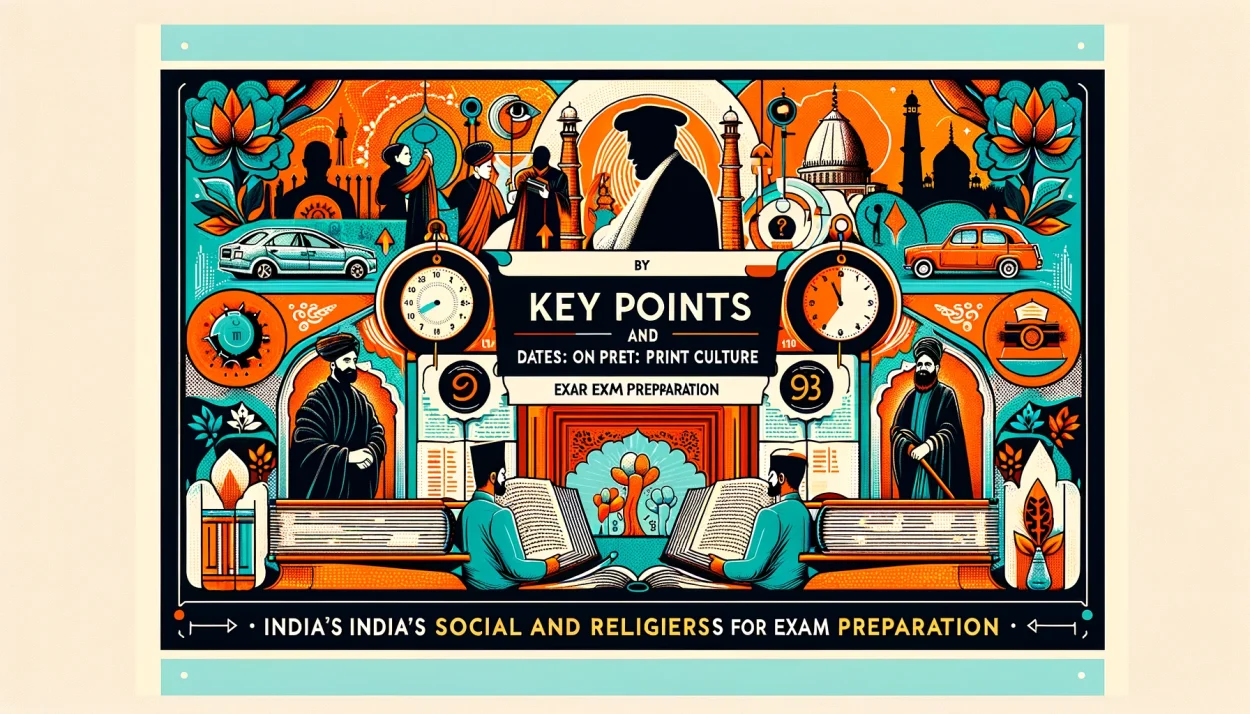
Key Points and Dates: Impact of Print Culture on India’s Social and Religious Reforms for Exam Preparation

For examinations, remembering key points and dates related to the impact of print culture on India’s religious and social reform movements can be very beneficial. Here are some essential highlights:
Key Points to Remember
- Introduction of Print Technology to India: Introduced by Portuguese missionaries in the late 15th century.
- Expansion of Print in India: Flourished significantly in the 18th century with the establishment of press regulations by the British colonial government.
- Role in Religious Reforms:
- Print media facilitated the dissemination of reformist ideas against traditional practices.
- Key figures: Raja Ram Mohan Roy, Swami Vivekananda, Dayanand Saraswati used print for religious and social reforms.
- Impact on Social Reform:
- Advocated against social evils like Sati, child marriage, and promoted women’s education and widow remarriage.
- Dr. B.R. Ambedkar used print media extensively for campaigning against caste discrimination.
- Nationalist Movements:
- Newspapers and books played a crucial role in spreading nationalist ideas and critiquing colonial rule.
- Literature and Education:
- Introduction of vernacular press facilitated wider access to literature and sacred texts, promoting literacy and education.
- Print and Censorship:
- The British colonial government implemented press laws to control and censor nationalist writings, reflecting the tension between authority and freedom of expression.
Important Dates to Remember
- 868 AD: The Diamond Sutra, the first known printed book, was produced in China (contextual reference for the origin of print culture).
- 1455 AD: Gutenberg Bible printed, marking the beginning of the print revolution in Europe (contextual reference to understand the spread of print technology).
- Late 15th Century: Introduction of print technology to India by Portuguese missionaries.
- 18th Century: Print culture began to flourish in India under British rule.
- 1829: Abolition of Sati through the efforts of Raja Ram Mohan Roy, showcasing the impact of print on social reforms.
- 1870s: Satyashodhak Samaj founded by Jyotirao Phule, emphasizing the role of print in social and caste reforms.
- 1920s-1930s: Dr. B.R. Ambedkar’s extensive use of print for Dalit rights and against caste oppression.
Remembering these key points and dates will provide a solid foundation for understanding the comprehensive impact of print culture on India’s religious and social reform movements, which is a crucial topic in various examinations.
Evolution of Print Culture: Impact on Society, Politics, and Culture
https://shalasaral.com/evolution-of-print-culture-impact-on-society-politics-and-culture/